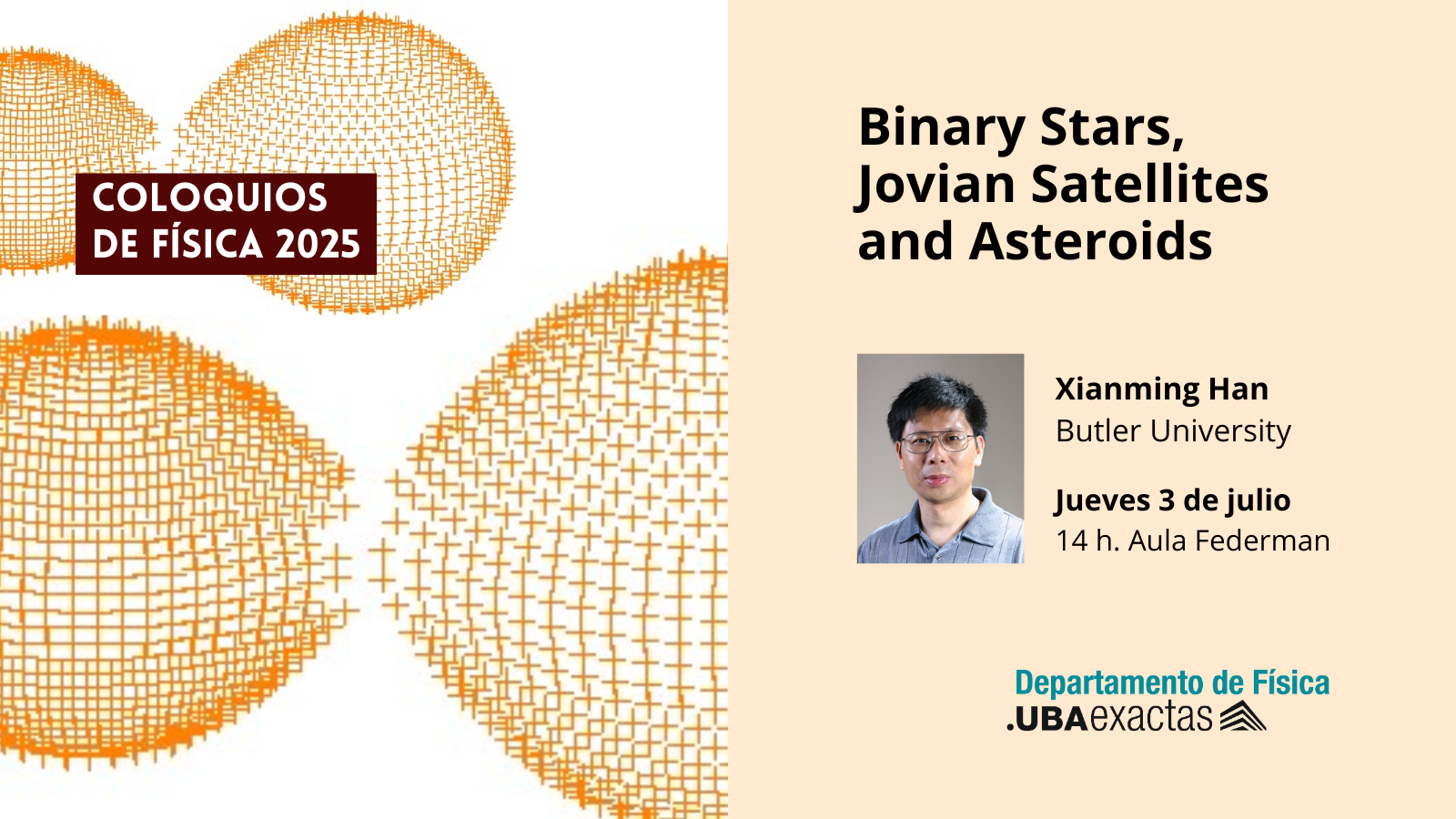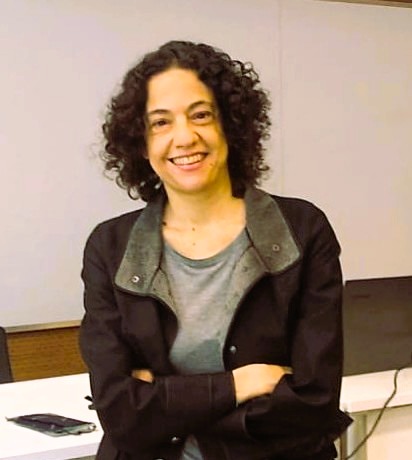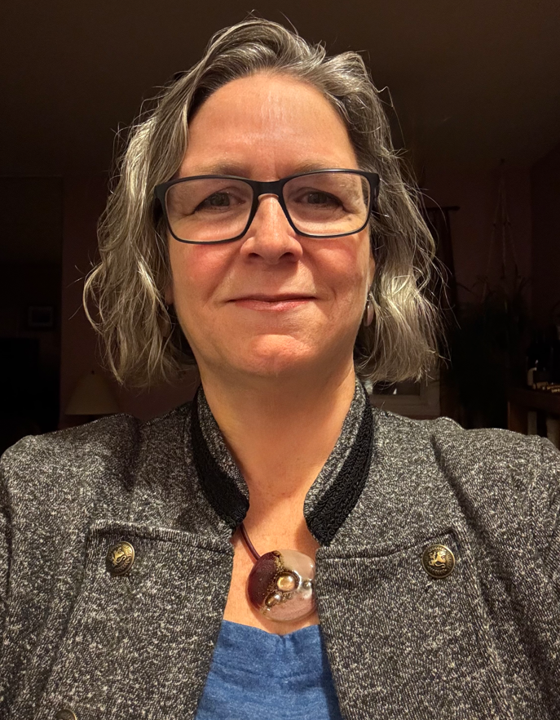El significado del espacio tiempo: agujeros negros y entrelazamiento cuántico
- 2025-07-22 17:00 |
- Aula Magna. Pab 2

Juan Maldacena
Institute for Advanced Study
Conferencia para todo público en el marco de la XXVII Escuela de invierno J.J. Giambiagi

Xianming Han, Department of Physics and Astronomy, Butler University, Indianapolis, Indiana, USA
Most stars are actually in pairs or triplets. Observing binary stars helps develop stellar evolution theories. If their orbital plane of a binary star system is more or less parallel to the light of sight, one star will block the other as they orbit around each other. This is known as eclipsing binary. In this talk, we will discuss observations of eclipsing binary star systems and what information we can extract from their lightcurves. We will also discuss observations of Jovian satellites and asteroids using our SARA (Southeastern Association for Research in Astronomy) and Holcomb telescopes.

Lucía Famá
UBA-Conicet
En esta charla les voy a contar las metodologías que empleamos para desarrollamos nuevos filamentos biodegradables y multifuncionales para impresión 3D a partir de materiales de la biomasa, utilizando conceptos de nanotecnología y procesos industriales. Los filamentos, con relevante capacidad estructural, pueden ser utilizados para fabricar piezas sostenibles y de diseño mediante impresión 3D con propiedades diferenciadas respecto de los materiales convencionales, debido a la incorporación de antioxidantes naturales y nanopartículas obtenidas por funcionalización física verde. Discutiré fenómenos como la separación de fases, la nucleación y posible formación de estructuras jerárquicas, y su impacto en las propiedades mecánicas y funcionales de los materiales. Mostraré cómo aplicamos modelos teóricos como Kohlrausch–Williams–Watts (KWW) para describir el proceso de deformación en tensión de las muestras, y modelos como el de Weibull y Peppas para interpretar el comportamiento Fickiano, no Fickiano o anómalo de difusión y de liberación de activos de las piezas. Finalmente veremos cómo la nanotecnología puede potenciar el diseño de materiales multifuncionales con aplicaciones en áreas como la liberación controlada, el envasado inteligente e incluso dispositivos sensores.

Miguel Larotonda
CITEDEF-CONICET
Los protocolos criptográficos basados en la mecánica cuántica prometen seguridad incondicional para la generación de claves, pero, al igual que otras tecnologías cuánticas aplicadas al procesamiento de información y al sensado ultrasensible, su implementación práctica requiere soluciones técnicas sofisticadas. En esta charla voy a repasar algunos de los componentes esenciales y complementarios que permiten llevar a cabo estos protocolos de manera eficiente.

Claire Brown - McGill University
Cell migration is fundamental to normal biological processes such as development, the immune response and wound healing. However, when cell migration is not regulated properly it can lead to pathological conditions such as cancer metastasis. Cell adhesions form between the extracellular matrix (ECM) and the internal cellular cytoskeleton creating structures required for cell movement. Adhesions are tightly regulated in space and time across the moving cell. For example, they form dynamic anchor points at the front of the cell so it can pull forward and adhesions at the cell rear that need to disassemble allowing for forward cell progression.
This presentation will focus on advanced microscopy techniques and their application to study the adhesion adaptor protein paxillin. Paxillin is an adaptor protein that plays a key role bringing structural and signaling proteins to sites of adhesion. We have been interested in a key paxillin phosphorylation site, serine 273 (S273) that is known to regulate adhesion dynamics. Our work has identified dynamic subdomains within individual adhesions where paxillin interacts and co-binds with one of its binding partners in a kinase-dependent manner. This interaction and kinase activity is required for effective cell migration.
In other work, we have implicated Lipoma Preferred Partner (LPP) as an important mechanosensitive integrator of TGFβ-mediated breast cancer cell migration and invasion. Data will be presented showing that LPP plays a role in regulating cancer cell migration and adhesion dynamics in response to TGFβ stimulation. This regulation requires LPP binding to the actin cytoskeleton which in turn regulates tension across individual adhesions to regulate cell migration. Our work also shows that LPP functions as a mechanosensor to distinguish between substrates of different stiffness and regulates when cells migrate versus invade.
Preliminary data from new developments in the lab will be presented including an invitro assay of cancer metastasis in the brain and expansion microscopy combined with super-resolution STED microscopy of paxillin within adhesions.